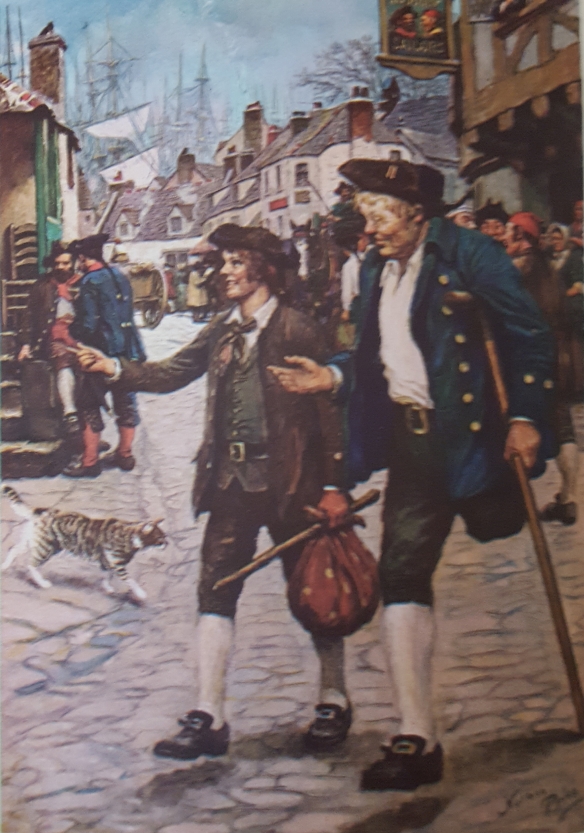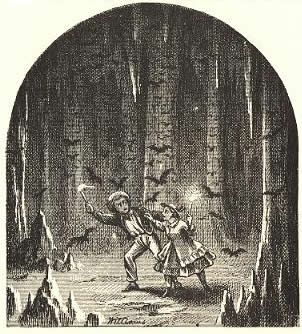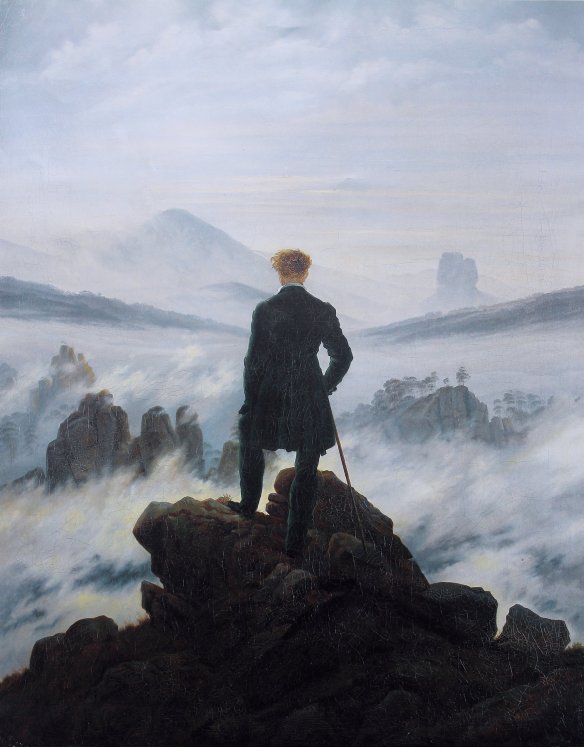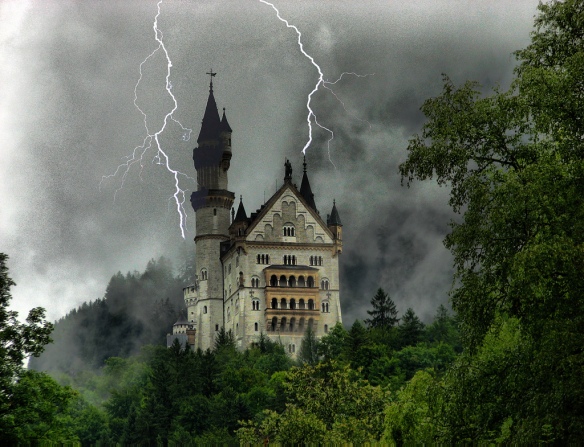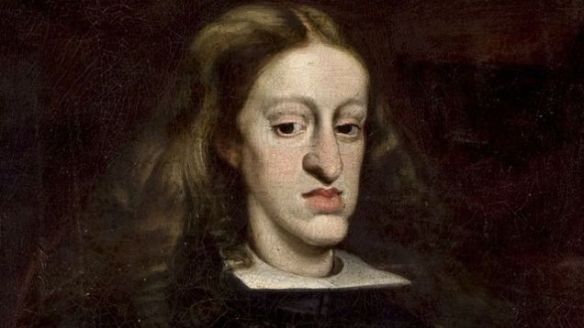Hello again everybody! I am tremendously pleased to announce that we have finally made it through February, the worst month of the year, and it is now March, when good things start happening again. Good things like March Madness, the High Holy Days of the basketball calendar. Good things like DC’s cherry blossoms starting to bloom. Good things like the Landmark Theaters’ Studio Ghibli Festival (though I haven’t seen any announcements about that yet, which is bumming me out a little). Good things like spring, and sun, and warm weather. And, of course, the goodest thing of all; shows from everyone’s favorite independent theatre company We Happy Few! Our first show of 2020 will be another of our fan favorite Classics-in-Action, an in-house adaptation of Alexandre Dumas’ revenge adventure The Count of Monte Cristo.
As is my wont, I…will not be telling you much about the show itself or the particulars of our adaptation yet, to not spoil anything about the story or bias you with my own interpretation (and also I haven’t been to any rehearsals yet so I don’t have any valuable insights on this production). Instead I am pleased to offer you another entry in my History Lesson series, the only time in my life I get to make use of my Bachelor’s Degree in History. Fortunately for you all, my specialization was the 1800s, because I was so interested in the massive social, political, economic, cultural, technological, and demographic changes that occurred in the century. And one of the first things I learned about it was that you couldn’t discuss any of those changes without addressing the French Revolution, which began a little over a decade before the 19th century, in 1789. Historians also couldn’t wrap up the themes of the century neatly at 1900; the logical endpoint, and beginning of a new era in world history, was the First World War in 1914. This period, from the French Revolution to the outbreak of World War I, is referred to historiographically as the Long 19th Century. And I think it is important for us to discuss the first third of it, specifically in France, to get some context for our story. Let’s get learning!
It is difficult to imagine a nation that underwent more changes of government, in less time, than France did between 1789 and 1815. In that 26 years France was an Absolute Monarchy, a Republic, a Dictatorship, an Empire, briefly a Constitutional Monarchy, even more briefly an Empire again, and then stabilized as a Constitutional Monarchy. This arrangement wobbled in 1830 during a second revolution (you may have heard about it in Les Miserables), which maintained a Constitutional Monarchy of the Bourbons but moved the crown to another branch of the family, but then stabilized for about 30 years, until the revolution of 1848 established another Republic, which would be suborned into another Empire three years later. But since The Count of Monte Cristo was finished in 1846 we don’t have to worry about that part.
…yet.

France Pre-Revolution.
Briefly: At the end of the 18th century the Kingdom of France was ruled by the Bourbon family, who held the throne and maintained their authority by Divine Right. However, due to, among other things, an inability to effectively levy taxes, particularly on the nobility, the cost of maintaining rivalries with Great Britain, Spain, and Austria, a handful of poor harvests, and the cartoonish extravagance of the Sun King Louis XIV a few generations before [cf. The end of the Spanish Golden Age -ed.], the kingdom was all but bankrupt. So in 1789, the first time in almost 200 years, the Estates General were invoked to find a way to make France solvent. The Estates General was an advisory body to the monarchy composed of three groups: the First Estate, the clergy, the Second Estate, the nobility, and the Third Estate, the “commoners”, although part of the requirement to participate in the Estate was a minimum tax payment. The vast majority of the Third Estate’s representation was actually drawn from the bourgeoisie, what we would call the upper middle class; lawyers, merchants, and non-noble landlords. With the aid of much of the First Estate and a few of the more liberal-minded of the Second, [most notably to my biased mind Hero of the American War of Independence and professional Revolutionary Gilbert du Motier, the Marquis de La Fayette -KH] the Third voted to rename the convocation the General Assembly and established its intention to create a Constitution for the nation which eliminated the feudal privileges of the nobility, dispossessed the Church of its holdings and wealth, and established a meritocratic and above all equal society. When the King attempted to dissolve the Assembly by dismissing its head, the Swiss financial expert Necker, and locking the representatives of the Third Estate out of their meeting hall, the people reacted…poorly. On July 14th partisan street fighters stormed prison/armory/Bourbon stronghold the Bastille, and we were off to the races. King Louis XVI lost his head to Madame La Guillotine a few years later and after some uncertainty France was officially a Republic in 1792.

“Une Exécution capitale, place de la Révolution”, by Pierre-Anton Demachy, 1793.
This Republic didn’t last long. Internal factionalism, paranoia, and radicalism from the sans-culottes [literally ‘without pants’, confusingly referring to the fact that laborers wore trousers instead of the knee-length breeches of the nobles -ed.], lower class laborers and peasantry, led to a series of massacres, show trials, and public executions initially targeting the nobility and clergy, and then spreading to moderates and critics of the sans-culottes in what is alarmingly but accurately referred to as the Terror. Under the influence of Maximilien Robespierre the radically leftist (even for revolutionaries) Committee of Public Safety oversaw the execution of almost twenty thousand and the arrest of over a quarter million more; the victims ranging from dispossessed nobles and noble sympathizers to political and personal enemies of the Committee. The Terror ended in 1794 in what is known as the Thermidorian Reaction; so named for the Revolutionary Month of Thermidor, mid-July to mid-August, when it took place. A coup by more moderate elements of the Revolution captured and executed Robespierre and a score of his allies, establishing in its place the Directory, a less radical but equally unpopular ruling council that was in its turn overthrown by Napoleon in 1799.
While this was happening in Paris the armies of the Revolution were fighting wars on just about all their borders. Austria, concerned by the precedent set by commoners guillotining their king and outraged by the execution of French queen and Austrian princess Marie Antoinette, declares war on Revolutionary France in 1792 and is joined by Prussia. [France actually preemptively declared war on THEM, presumably in order to have the initiative in the upcoming conflict, but since Austria was obviously preparing for war I am comfortable muddying the waters a little. This is why I don’t use my history degree that much; because I’m bad at it -KH] Spain, Portugal and Great Britain join the coalition the following year, and France suffers serious defeats in the Netherlands and the south of France. In 1794 the French armies, having instituted a universal draft and employing the unheard-of policy of promoting by merit instead of selling commissions, turned it around. By 1798 the French have established puppet client republics in the Netherlands, Belgium and Northern Italy, reached the gates of the Austrian capital of Vienna, and beaten the British so thoroughly at sea that Napoleon was free to invade British holdings in Egypt.

“Napoleon Crossing the Alps”, by Jacques-Louis David, 1801. I have a copy of this painting above my couch.
Since I’ve now mentioned him twice and he’s a fairly important figure in both the history of France and specifically in our story I should probably discuss him. Napoleon Bonaparte, a young Corsican artillerist who capitalized on the army’s new willingness to promote for merit, risen rapidly through the ranks, and been tremendously successful leading the Republican Army in Italy, seized the position of Consul in 1799 from the unpopular Directory. A few years later, like Caesar before him, he believed he should be Emperor instead. Unlike poor Caesar, however, the Senate of France agreed, and Napoleon was crowned Emperor of France in 1804. He promptly went back to war, that being what he was best at. He changed the policy of Revolutionary France’s warmaking from securing borders and supporting the causes of/establishing republics to the more Imperial goal of conquest. He conquered most of Western, Southern, and Central Europe until he found himself stymied in Spain by Arthur Wellesley and humiliated in Russia by General Winter. Napoleon was driven into exile on the Isle of Elba when the Allies (Great Britain, Spain, Russia…the rest of Europe) captured Paris in 1814, and Louis XVIII, the younger brother of the executed Louis XVI, was placed on the throne. But Napoleon, who had been tremendously popular as Emperor, not least for maintaining the Republican ideals of equality and meritocracy, escaped from exile less than a year later. He rallied his army for another try at conquering the world in the Hundred Days, only to be defeated again by Wellesley, now Duke Wellington, at Waterloo. With his defeat and second exile, this time to St. Helena in the middle of the Atlantic Ocean, the Bourbon Restoration finally took and France was left to the (relative) stability of a constitutional monarchy under Louis XVIII. In 1815 the old order has been re-established, the nobility and the Church are returned to their previous positions of power, and all traces of Napoleonic or Revolutionary sentiment are ordered purged. A brief interruption in 1830 shifted the crown from one branch of the Bourbon family to another, but after that the body politic remained stable for almost twenty years.
This period of upheaval is the immediate backdrop to The Count of Monte Cristo, which begins literally days before Napoleon returns from Elba in 1815 and ends in 1839. France’s entire power structure has been inverted, twice, and it has conquered and subsequently lost most of Europe. It has shown the common people of France (and, indeed, the rest of Europe) that power is available for seizure, and that it could be maintained, even if all the world stood against them. It has taught the nobility that THEIR power is not as unassailable as they may have imagined. It has expelled religion entirely from the public sphere. And it has put the theories of the previous century’s Enlightenment into practice, radically leveling the field and explicitly enforcing the notion that all men are equal. That many of these changes were reversed by the Bourbon Restoration doesn’t mean they hadn’t happened, however much the King and his courtiers may wish it was so. Also worth noting is that the experience turned France into a Nation, with a coherent national identity beyond “the holdings of nobles owing allegiance to a king”. It maintains this identity even after the monarchy has been restored, with the new Bourbons referring to themselves as “King of the French” instead of “King of France”. This nascent proto-nationalism is the first whisper of the political movement that would define the Long 19th Century, and while it isn’t ESPECIALLY relevant to Monte Cristo it is still worth knowing.
I hope this helps to give you all some context for what is happening in and to France in the period immediately before our story starts. If this laughably incomplete history of France isn’t enough foreknowledge for you and you think it would help you understand the story if you’ve read it first, I would strongly encourage you to start right now, as the unabridged Count of Monte Cristo is about 1300 pages long. If you don’t want to read half a million words and you’re comfortable with trusting us to tell you the story, and you should be, the tickets are available now!
